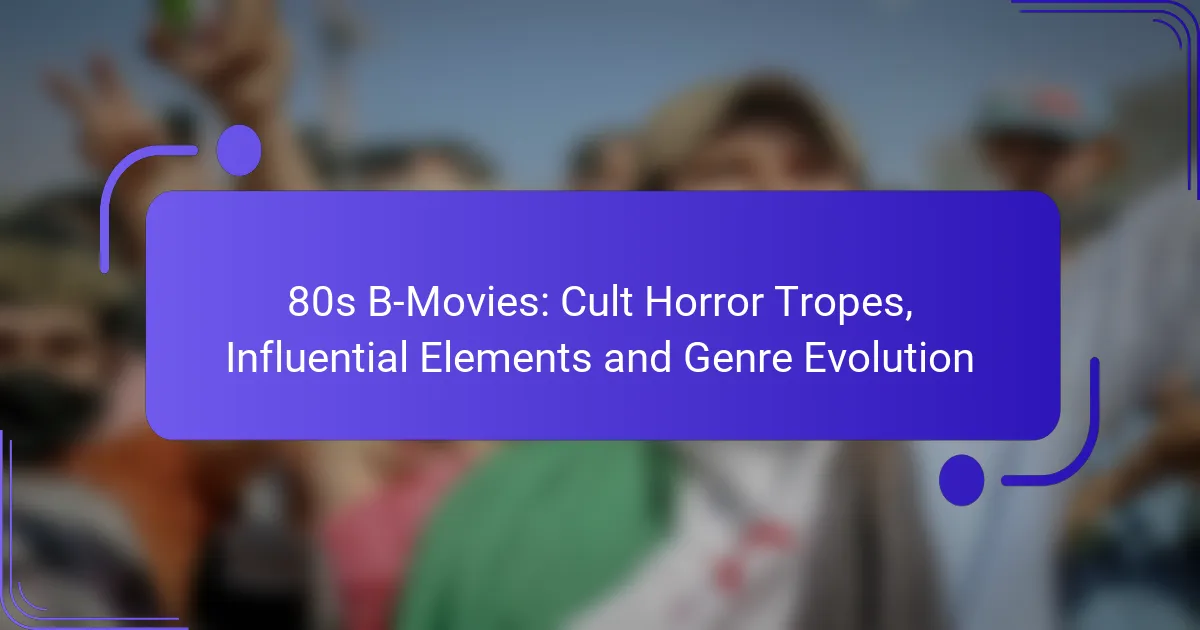The 1980s B-movie landscape is marked by distinctive cult horror tropes that have left a lasting impact on the genre. With their unique blend of humor, archetypal characters, and exaggerated scenarios, these films not only captivated audiences but also laid the groundwork for contemporary horror storytelling. Iconic titles like “The Evil Dead” and “Re-Animator” exemplify this creative spirit, inspiring future filmmakers and shaping the evolution of horror cinema.
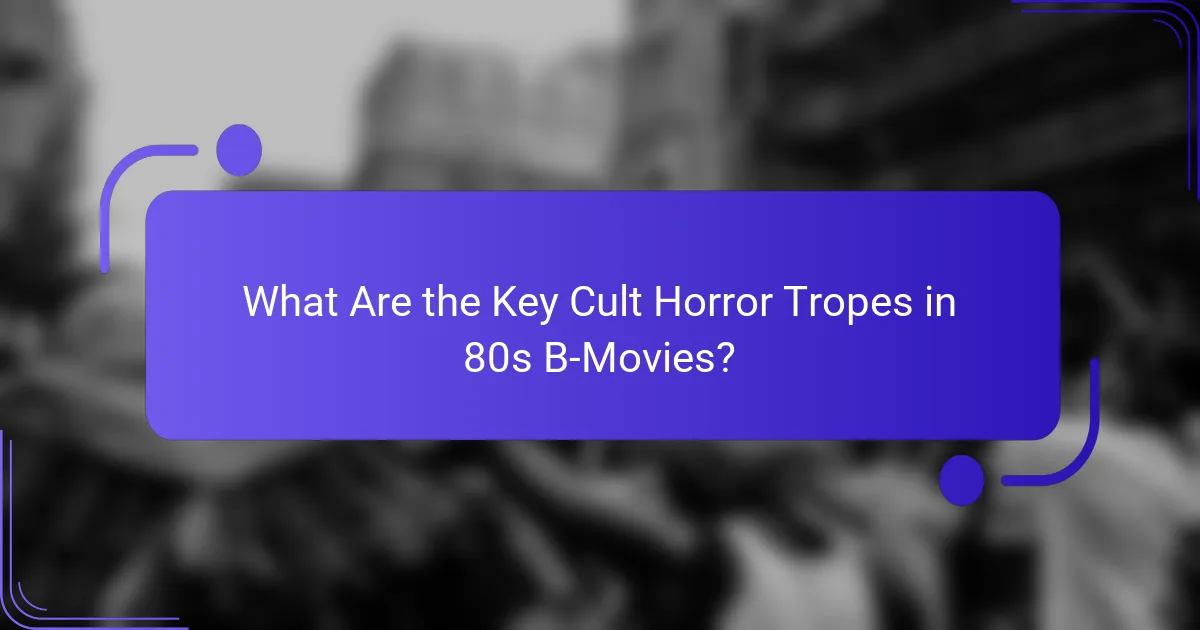
You can learn more in 80s B-Movies Overview.
What Are the Key Cult Horror Tropes in 80s B-Movies?
The key cult horror tropes in 80s B-movies include distinctive elements that define the genre and resonate with audiences. These tropes often blend humor, archetypal characters, and exaggerated scenarios, contributing to the films’ enduring popularity and influence.
You can explore more about these themes in cult horror movie tropes.
Campy Humor
Campy humor is a hallmark of 80s B-movies, often juxtaposing horror elements with comedic moments. This blend creates a unique viewing experience where audiences can laugh at the absurdity of the situations, such as characters making poor decisions or delivering cheesy one-liners. Films like “Evil Dead II” exemplify this trope, balancing scares with slapstick comedy.
When incorporating campy humor, filmmakers often exaggerate characters and scenarios to the point of ridiculousness. This approach invites viewers to embrace the silliness, making the horror less intense and more entertaining.
Final Girl Archetype
The Final Girl archetype is a significant trope in 80s horror, representing the last surviving female character who confronts the antagonist. This character often embodies innocence and resilience, contrasting with the other characters who typically meet gruesome fates. Notable examples include Laurie Strode in “Halloween” and Nancy Thompson in “A Nightmare on Elm Street.”
This trope emphasizes themes of survival and empowerment, as the Final Girl often takes on a proactive role in defeating the villain. Filmmakers can enhance this trope by developing strong backstories for these characters, making their triumphs more impactful.
Over-the-Top Villains
Over-the-top villains are a defining feature of 80s B-movies, characterized by their exaggerated personalities and often ludicrous motivations. These antagonists, such as Freddy Krueger or Jason Voorhees, become iconic due to their unique traits and memorable catchphrases. Their larger-than-life presence adds to the film’s entertainment value.
Creating an over-the-top villain involves crafting a distinctive look and memorable backstory. Filmmakers should focus on making these characters both terrifying and oddly charismatic, ensuring they leave a lasting impression on the audience.
Unlikely Heroes
Unlikely heroes often emerge in 80s B-movies, featuring characters who are not traditionally heroic but find themselves in extraordinary situations. These protagonists, such as the nerdy teenager or the reluctant survivor, often display unexpected bravery and resourcefulness. This trope allows for character development and relatability.
To effectively portray unlikely heroes, filmmakers should emphasize their growth throughout the film. Viewers appreciate seeing ordinary individuals rise to the occasion, which can create a strong emotional connection to the story.
Gory Special Effects
Gory special effects are a staple of 80s B-movies, showcasing graphic violence and creative kills that often push the boundaries of realism. Films like “The Thing” and “Hellraiser” are known for their innovative practical effects, which captivated audiences and set a standard for horror visuals. These effects often serve to shock and entertain, enhancing the overall experience.
When utilizing gory special effects, filmmakers should balance creativity with the narrative. Excessive gore without purpose can detract from the story, so it’s essential to integrate these effects meaningfully to elevate the film’s impact.
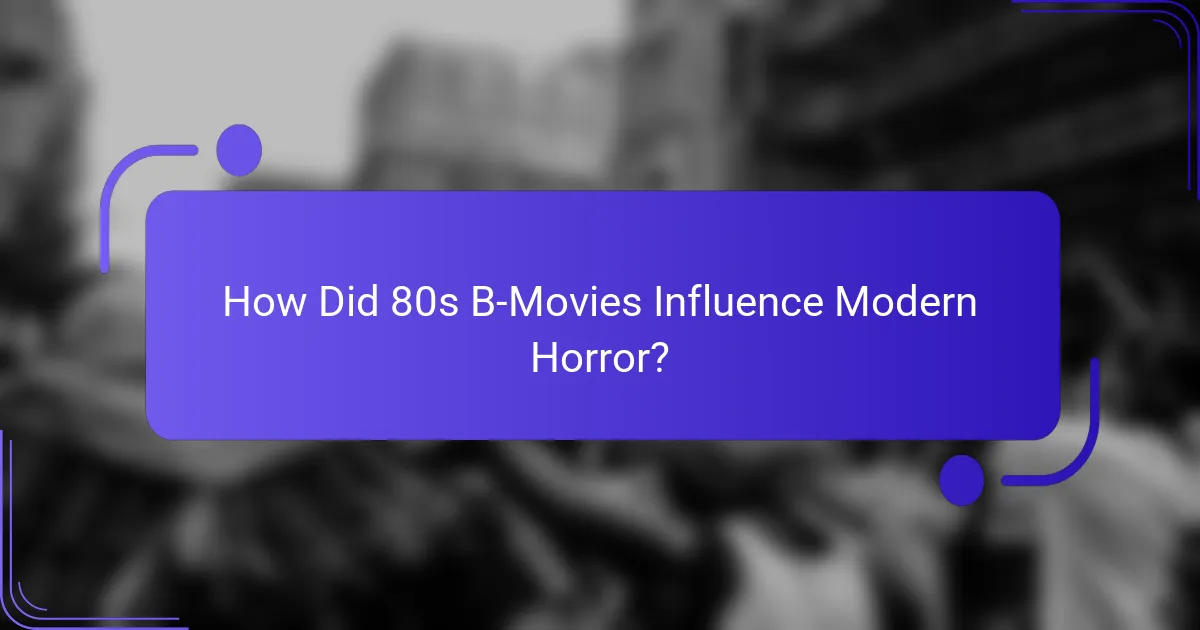
How Did 80s B-Movies Influence Modern Horror?
The 1980s B-movie scene laid the groundwork for many elements found in contemporary horror films. Its unique blend of creativity, campiness, and boundary-pushing themes continues to resonate, shaping how modern horror is crafted and perceived.
Revival of Slasher Films
The slasher film genre saw a significant revival in the 1980s, characterized by iconic villains and a formulaic approach to storytelling. This era introduced memorable characters like Michael Myers and Freddy Krueger, establishing tropes such as the final girl and the use of suspenseful music to heighten tension.
Modern horror films often reference these slasher conventions, blending them with new storytelling techniques. For example, films like “Happy Death Day” and “The Final Girls” pay homage to the slasher genre while incorporating humor and self-awareness, appealing to both nostalgic audiences and new viewers.
Inspiration for Found Footage Style
The 1980s introduced a raw, gritty aesthetic that influenced the found footage style popularized in the 2000s. Movies like “The Blair Witch Project” drew on the low-budget, DIY spirit of 80s B-movies, showcasing how effective storytelling can emerge from limited resources.
This approach emphasizes realism and immersion, allowing audiences to feel as though they are part of the unfolding horror. The success of found footage films has led to a resurgence of similar styles, with filmmakers experimenting with different narratives and settings to keep the genre fresh.
Impact on Horror-Comedy Genre
The blend of horror and comedy became a defining feature of 80s B-movies, with films like “Evil Dead II” and “Re-Animator” showcasing how humor can coexist with terror. This fusion has influenced modern horror-comedy films, which often balance scares with laughs to create a unique viewing experience.
Contemporary examples, such as “What We Do in the Shadows” and “Shaun of the Dead,” demonstrate the effectiveness of this genre mashup. By leveraging the absurdity of horror tropes, these films engage audiences in a way that both entertains and frightens, ensuring the legacy of 80s B-movies continues to thrive.
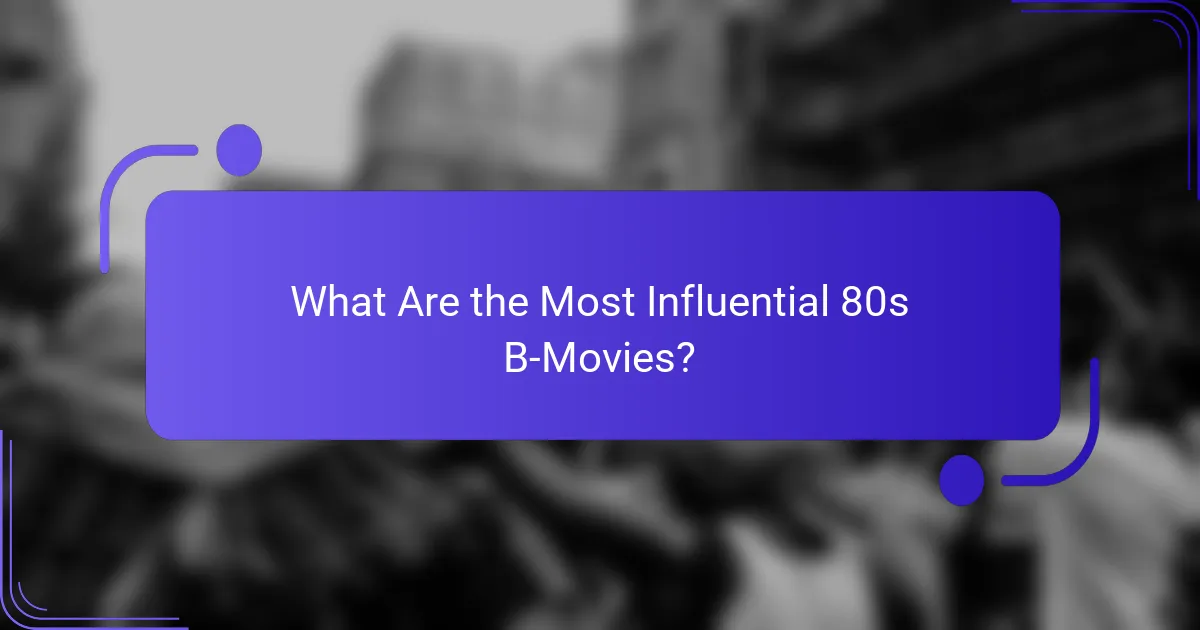
What Are the Most Influential 80s B-Movies?
The most influential 80s B-movies shaped the horror genre with their unique storytelling, low-budget creativity, and memorable tropes. Films like “The Evil Dead” and “Re-Animator” not only gained cult followings but also inspired countless filmmakers and set the stage for future horror innovations.
The Evil Dead
“The Evil Dead,” directed by Sam Raimi, is a cornerstone of 80s horror that introduced audiences to the concept of cabin-in-the-woods terror. Its blend of slapstick humor and gruesome horror created a unique viewing experience that resonated with fans.
The film’s innovative use of practical effects and camera techniques, such as the “shaky cam,” contributed to its cult status. It demonstrated how a low budget could still yield impactful scares and memorable visuals.
Re-Animator
This film is notable for its over-the-top gore and campy performances, which have influenced many horror-comedy hybrids since its release. Its success highlighted the potential for blending genres and pushing boundaries in storytelling.
Night of the Creeps
Its mix of humor and horror, along with memorable one-liners, has earned it a dedicated fan base. The film serves as a reminder of the playful nature of 80s B-movies, where self-awareness and genre-blending were celebrated.
Chopping Mall
“Chopping Mall” features a group of teenagers trapped in a mall with malfunctioning security robots. This film exemplifies the absurdity of 80s horror, combining slasher elements with a satirical take on consumer culture and technology.
The film’s low-budget charm and campy execution have made it a beloved classic among fans of the genre. It highlights how B-movies often embraced their limitations to create entertaining and memorable experiences.
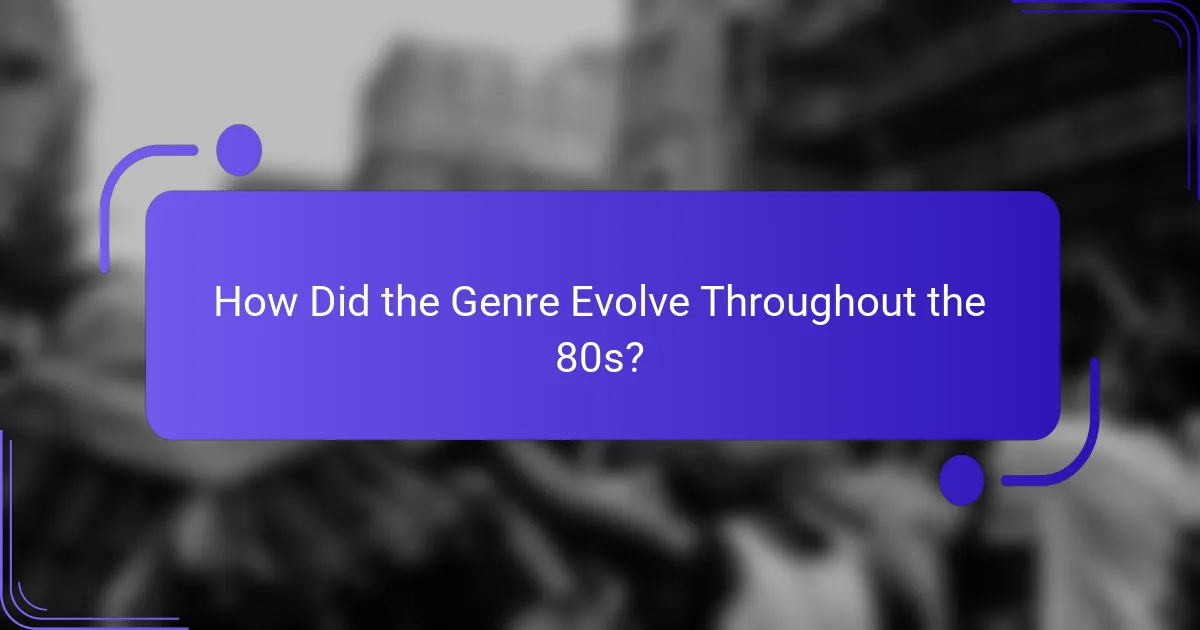
How Did the Genre Evolve Throughout the 80s?
The evolution of the horror genre in the 1980s was marked by significant shifts in filmmaking techniques, the rise of independent creators, and changing audience preferences. These changes not only shaped the aesthetic and narrative styles of cult horror films but also influenced the broader landscape of cinema.
Shift from Practical Effects to CGI
The 1980s saw a notable transition from practical effects, such as animatronics and makeup, to the introduction of computer-generated imagery (CGI). While practical effects provided a tangible, visceral quality to horror films, CGI began to offer filmmakers new possibilities for visual storytelling, allowing for more imaginative and surreal sequences.
This shift was exemplified in films like “The Terminator” and “Ghostbusters,” where CGI enhanced the visual experience. However, many filmmakers still relied on practical effects for their authenticity, leading to a blend of techniques that defined the era.
Emergence of Independent Filmmakers
The 1980s marked the rise of independent filmmakers who challenged the norms of mainstream cinema. With lower budgets and more creative freedom, these filmmakers produced cult classics that often pushed the boundaries of horror. Titles like “The Evil Dead” and “Re-Animator” showcased innovative storytelling and unique styles that resonated with audiences.
Independent films often embraced unconventional narratives and experimental techniques, allowing for a diverse range of horror experiences. This shift encouraged a more personal and artistic approach, setting the stage for future generations of filmmakers.
Changes in Audience Expectations
As horror films evolved throughout the 1980s, audience expectations shifted significantly. Viewers began to seek more than just scares; they wanted complex characters, engaging plots, and a blend of horror with humor or social commentary. This demand led to the emergence of sub-genres like horror-comedy, exemplified by films such as “Shaun of the Dead.”
Filmmakers responded by crafting stories that not only frightened but also entertained and provoked thought. This evolution in audience expectations contributed to the lasting impact of 80s horror, influencing the genre’s trajectory in subsequent decades.
